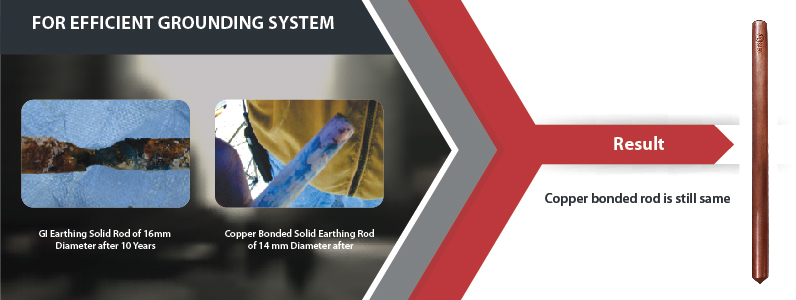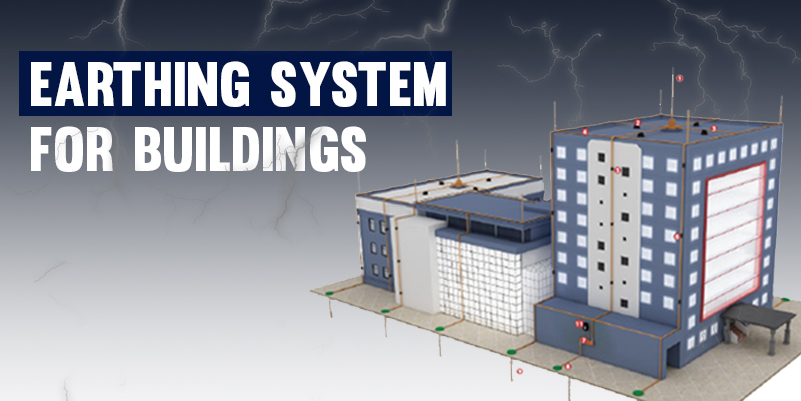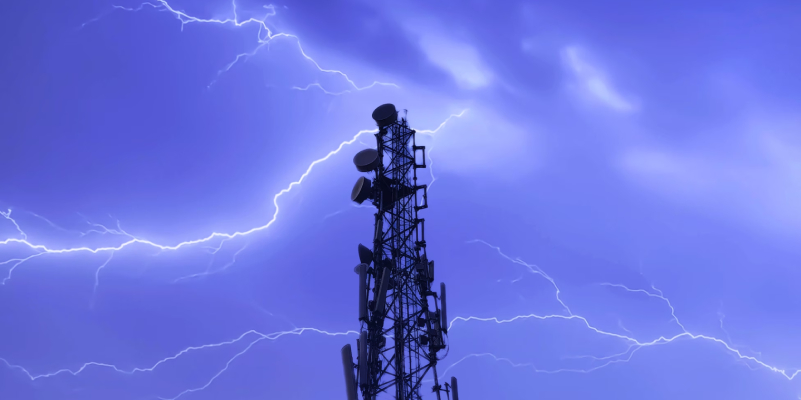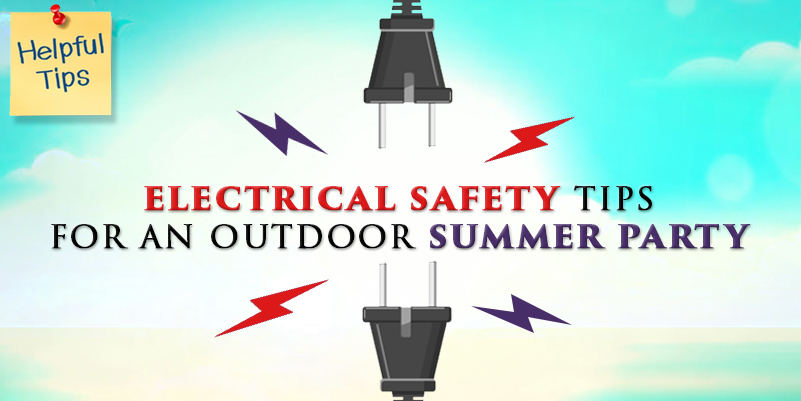
Copper bonded rods and galvanized iron rods both are using in the earthing system to provide protection against fault current and pass the same directly into the earth safely. When it comes to considering better than many people get confused between the galvanized iron rod and copper bonded rods. So here are some outshine features of the best one.
Top 7 characteristics are listed below:
Conductivity: Copper bonded withstands strongly against many mechanical cases of abuse than galvanized iron plus it offers better conductivity too.
Corrosion Resistant: Galvanized iron (GI) contains lead which directly invites the corrosion quickly thus it’s not corrosion-resistant while copper bonded rod has the same corrosion-resistant properties as pure copper.
Steel Strength: During the mixed components with yellow brass the galvanized steel automatically triggers dezincification and on the other hand the copper bonded rod maintains the high strength of steel even more than pure copper as the copper bonded rod is the formation of an electrolytic process in which copper and high tensile steel build a strong copper bonded rod.
Installation: The underground installation of GI rods is quite gruelling as it should never be used without covering that means it requires properly coverage near the rod during an installation. While the copper bonded holds high mechanical strength that makes the installation easier than it should be simply placed underground.
Water Effect: As GI contains lead that indicates the high level of water reduces the GI intelligence but copper bonded can resist water level effortlessly and offer the same intelligence while performing in the earthing system.
Cost-Effective: The galvanized iron cost is cheaper than copper bonded but the other failures of GI rods demand the highly expensive repair cost. On the other hand, the copper bonded requires a one-time investment.
Lifespan: The lifespan of copper bonded is more than 40 years which is proven as per research conducted by the National Electrical Grounding Research Project along with the collaboration of the National Fire Protection Association. While the GI rods offer maximum 8-10 years of lifespan.
The conclusion is clear as per the given data in the above text shows the benefits of copper bonded which is more than GI. Also, the copper bonded rod is chosen best as per many standards. It complies IEEE 80, UL 467, and IS 3043 standards.
Copper bonded rods and galvanized iron rods both are using in the earthing system to provide protection against fault current and pass the same directly into the earth safely. When it comes to considering better than many people get confused between the galvanized iron rod and copper bonded rods. So here are some outshine features of the best one.
Top 7 characteristics are listed below:
Conductivity: Copper bonded withstands strongly against many mechanical cases of abuse than galvanized iron plus it offers better conductivity too.
Corrosion Resistant: Galvanized iron (GI) contains lead which directly invites the corrosion quickly thus it’s not corrosion-resistant while copper bonded rod has the same corrosion-resistant properties as pure copper.
Steel Strength: During the mixed components with yellow brass the galvanized steel automatically triggers dezincification and on the other hand the copper bonded rod maintains the high strength of steel even more than pure copper as the copper bonded rod is the formation of an electrolytic process in which copper and high tensile steel build a strong copper bonded rod.
Installation: The underground installation of GI rods is quite gruelling as it should never be used without covering that means it requires properly coverage near the rod during an installation. While the copper bonded holds high mechanical strength that makes the installation easier than it should be simply placed underground.
Water Effect: As GI contains lead that indicates the high level of water reduces the GI intelligence but copper bonded can resist water level effortlessly and offer the same intelligence while performing in the earthing system.
Cost-Effective: The galvanized iron cost is cheaper than copper bonded but the other failures of GI rods demand the highly expensive repair cost. On the other hand, the copper bonded requires a one-time investment.
Lifespan: The lifespan of copper bonded is more than 40 years which is proven as per research conducted by the National Electrical Grounding Research Project along with the collaboration of the National Fire Protection Association. While the GI rods offer maximum 8-10 years of lifespan.
The conclusion is clear as per the given data in the above text shows the benefits of copper bonded which is more than GI. Also, the copper bonded rod is chosen best as per many standards. It complies IEEE 80, UL 467, and IS 3043 standards.



